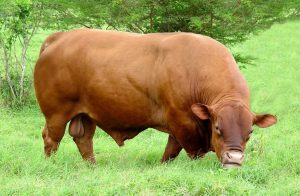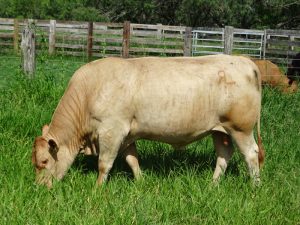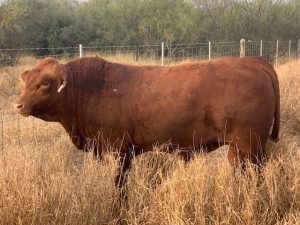Maternal Sires
While it may seem counter intuitive, a single bull can have a much bigger impact on a maternal breeding program through his daughters than a single cow. While embryo transplant technology has gotten less expensive, it is still more cost effective to focus on sire selection in order to meet program objectives. To that end, we select bulls based on a balanced set of characteristics: heat tolerance, calving ease, growth performance, marbling and confirmation.
Over thousands of years, two sub-species of cattle developed heat tolerance traits: Bos taurus indicus ("Zebu") and Bos taurus africanus ("Sanga"). Each subspecies represents multiple breeds, and both Zebu and Sanga cattle have been crossed with Bos taurus taurus ("Taurine") breeds, primarily British breeds, to develop composite breeds that have both heat tolerance and carcass performance traits.
To compare and contrast the performance of three heat tolerant composite breeds, a 1/3rd of our herd will be breed to one of following three bulls. The offsprings performance will be followed into their respective programs. The heifers will be retained for further cross breeding and the bull calves will be placed in a feeder program.
Senepol is composite breed developed on the Caribbean Island of St. Croix by crossing:
- Red Poll cattle, a British (Taurine) breed, and
- N'Dama cattle, an African (Sanga) breed.
Fun fact -- Senepol carry the "slick hair" gene, which contributes to their heat tolerance.
Sire: WC 950K
From the Senepol breed, we selected WC 950K, because of his calving ease, confirmation and muscle expression. 


